The sixth set of black and white pictures I took in London in 1980 together with the stories about them first published on Facebook.
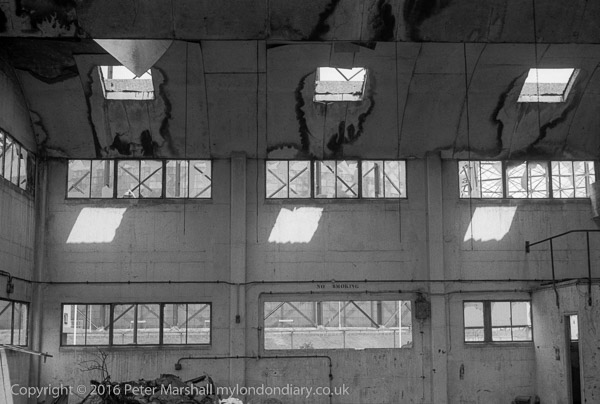
24j-23: wharf, derelict,
http://londonphotographs.co.uk/london/1980/24j-23.htm
Looking from the inside of the derelict shed you can see the two gas holders through the windows.
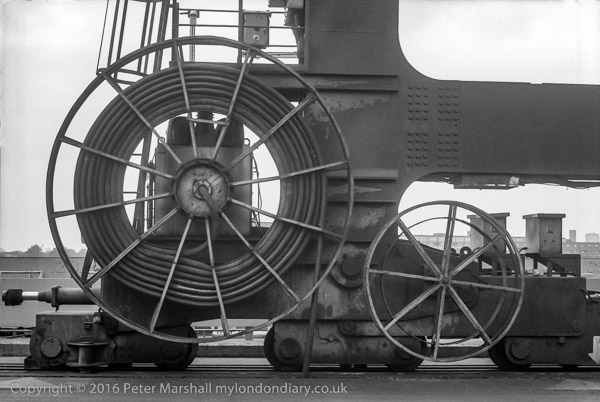
24j-25: wharf, machinery
http://londonphotographs.co.uk/london/1980/24j-25.htm
Enderby’s Wharf was where the cables that provided worldwide communication long before the age of radio and the satellites were made. The Telegraph Cable Works was established here in 1854 by Glass Elliott and William Henley, though Henley moved to North Woolwich. The company later merged with Siemens and were taken over by Submarine Telephones and Cables Ltd in 1979, later becoming part of Nortel and then Alcatel. The first transatlantic cables were made here and laid in the mid 1860s by the SS Great Eastern. Manufacture of cables here ceased shortly before I took this picture. There is a short length of cable by the riverside path and this piece of cable loading gear is still by the riverside.
Enderby House was built in 1830 for a member of the Enderby family, who were coopers in London and later moved into shipping and set up a patent rope, twine and canvas factory here, beofre losing their fortunes in the Antartic whaling industry. Grade II listed, it was deliberately allowed to deteriorate. As a condition of planning permission the developer were required to restore it to a decent condition and it is now incorporated into a larger building, though not I think as it originally was.
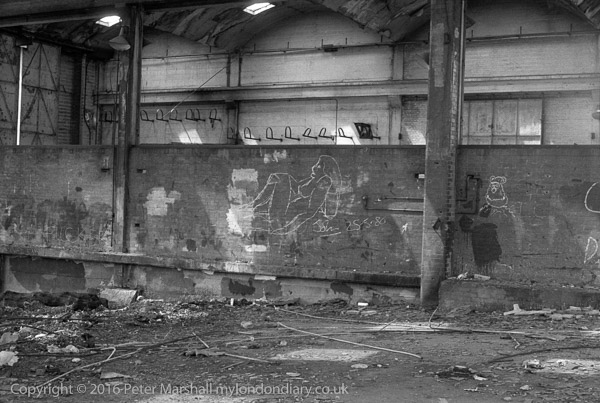
24j-34: wharf, derelict, graffiti,
http://londonphotographs.co.uk/london/1980/24j-34.htm
Another picture inside the derelict shed at Bay Wharf. Among the scrawlings on the wall was a rather better than averagely drawn chalked reclining nude, apparently signed by the artist, ‘John 25.5.80’, almost certainly the day before I took this picture on the Spring Bank Holiday, which that year was on May 26th. The view also shows some details of the building and its vaulted roof.
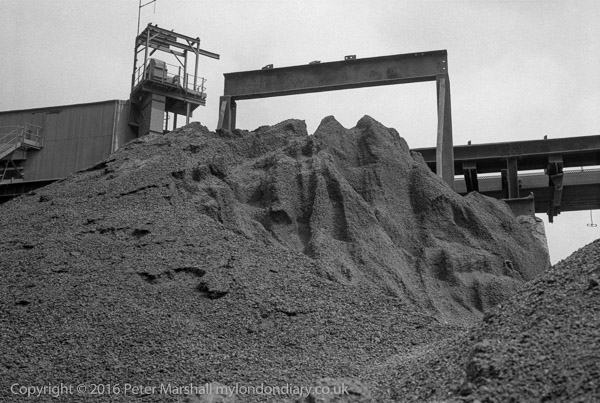
24j-41: wharf, sand, gravel,
http://londonphotographs.co.uk/london/1980/24j-41.htm
Sand and Gravel at Granite Wharf. The site is now occupied by new and expensive flats. The whole area, including Greenwich Wharf, Lovells Wharf, Granite Wharf, Providence Wharf, Badcock’s Wharf, Pipers wharf and Cadet (or Paddock) Place is now known as Greenwich Wharf.
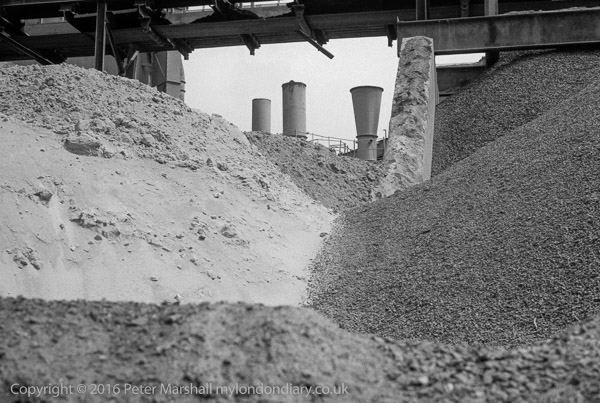
24j-42: wharf, sand, gravel,
http://londonphotographs.co.uk/london/1980/24j-42.htm
More sand, aggregate and gravel at Granite Wharf, which remained in use by Tarmac until mid-2001. It was first let by Morden College to Victorian road builder John Mowlem in the 1840s.
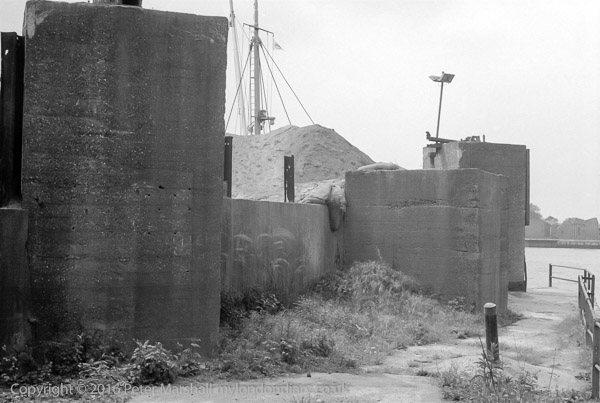
24j-43: wharf, sand, gravel, footpath, river
http://londonphotographs.co.uk/london/1980/24j-43.htm
I think the massive concrete blocks were bases for cranes at the wharf. The inlet here where Cadet Place left the riverside path was known locally as Dead Dog Bay, Mary Mills suggests possibly because animals which escaped the Foreign Cattle Market at Deptford and were drowned washed up here.
THe whole area is no covered by recently built flats, The River Gardens, where a 2-bed flat will cost you a little over £600,000, and Cadet Place no longer exists. A walkway, River Gardens Walk, with steps up from Banning St opposite Derwent St occupies roughly the same position.
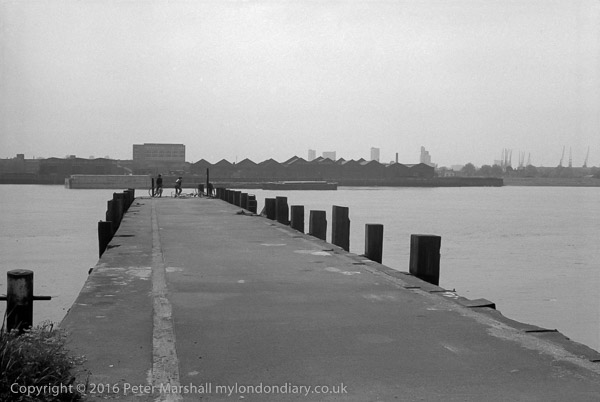
24j-44: children, pier, river,
http://londonphotographs.co.uk/london/1980/24j-44.htm
One of several piers on the riverside path, this may be at Primrose Wharf, but if so had been considerably modified since I took this picture. I don’t think the pier was officially open to the public at the time I made this picture.
Primrose Pier belonged to Amylum and was later opened by them to the public but in 1998 it was resurfaced and part-rebuilt by the Groundwork team, with reed beds being added on either side and disabled access provided.
More to follow…
Tags: 1980, black and white, Greenwich, London, peter Marshall, photographs